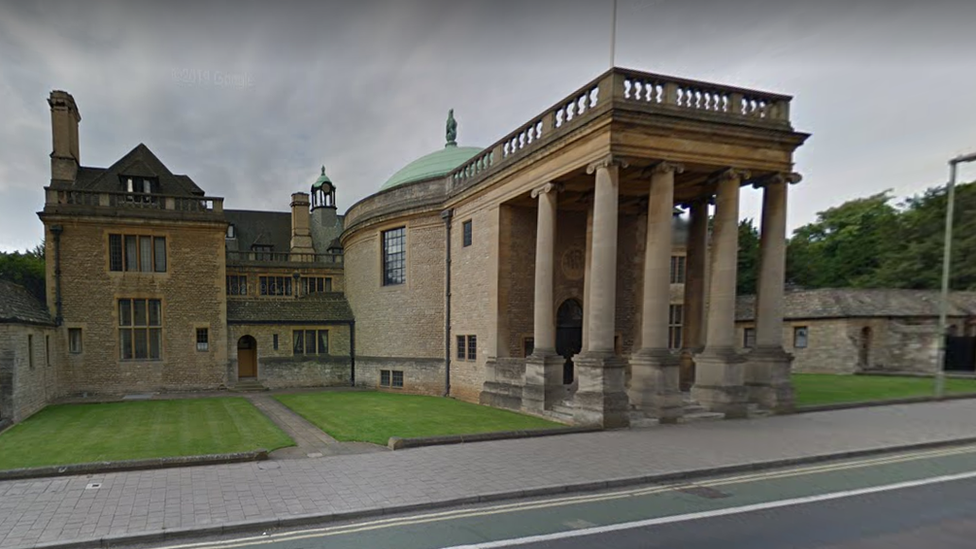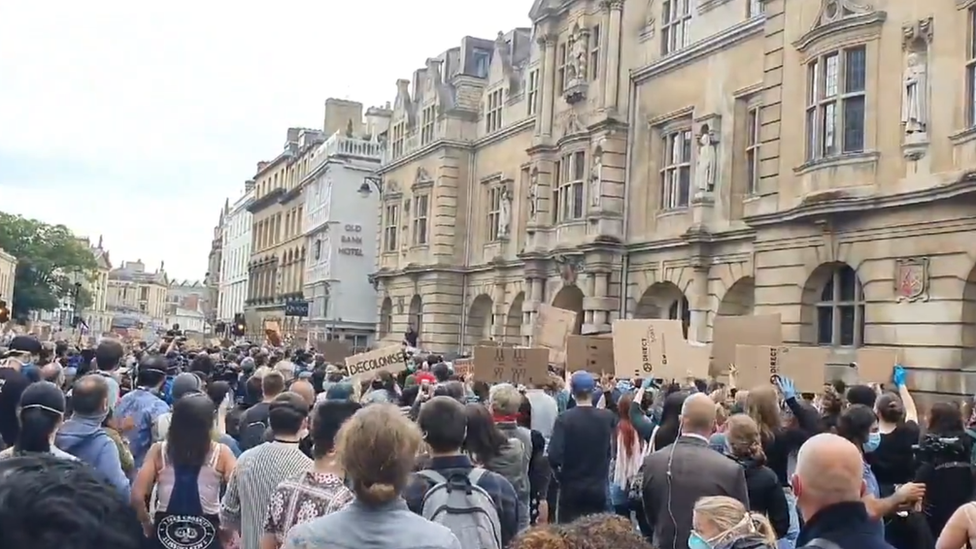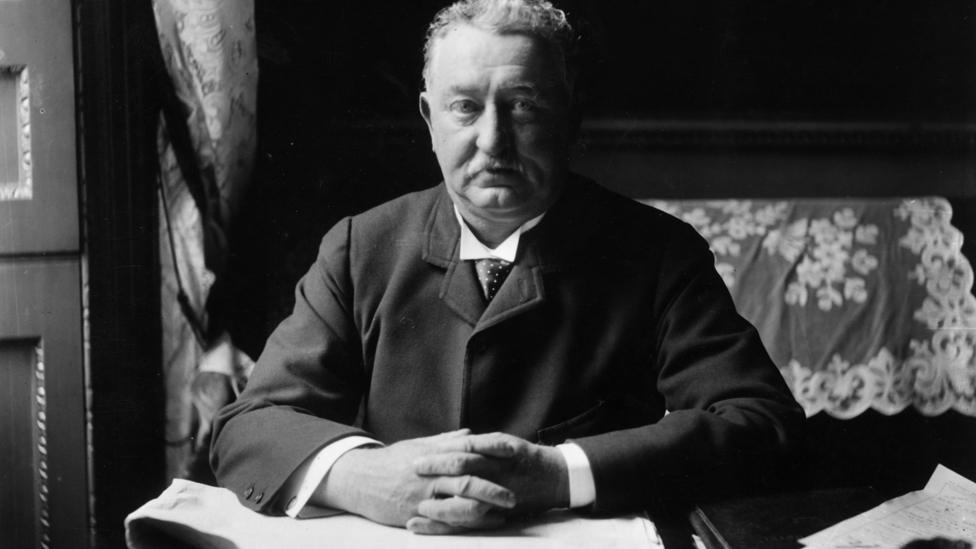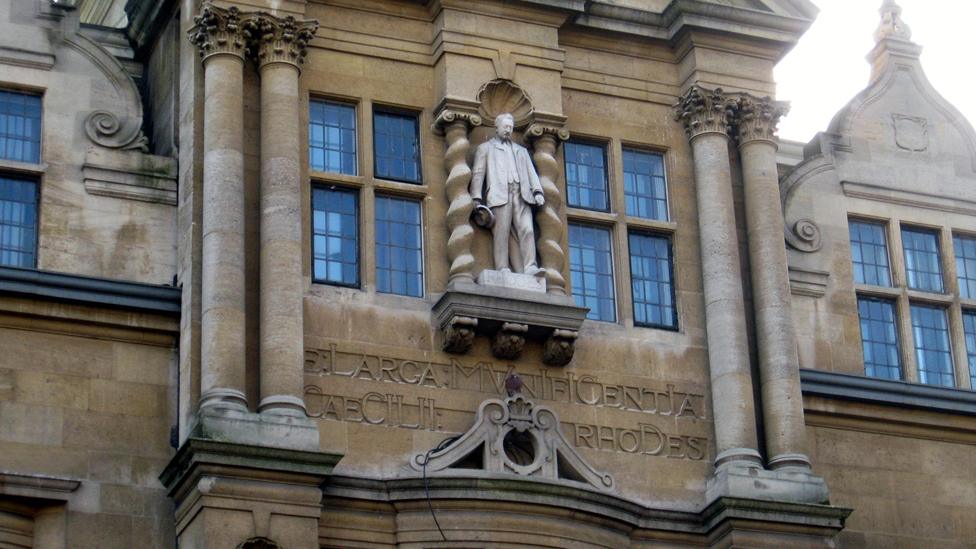Rhodes House to undergo major redevelopment
- Published

The expansion to Rhodes House, in South Parks Road, was passed on Tuesday
The headquarters of the charitable trust founded by imperialist Cecil Rhodes will undergo a major expansion after plans were narrowly approved.
The Rhodes Trust plans to remodel Rhodes House and covert its basement into conference hall for 300 people.
New accommodation and improved office spaces are also in the proposals.
Oxford city councillors granted planning permission for the Grade II* listed building, which was built as memorial to Rhodes in 1929.
The decision over the building's redevelopment, made on Tuesday afternoon, comes after Oxford's Oriel College decided in June it wanted to remove its statue of Rhodes.
Votes for and against the development were split evenly between eight committee members, which meant Councillor Colin Cook's casting vote as chairman passed the plans, which are subject several conditions.

Protestors have been calling for the statue of the British Imperialist Cecil Rhodes to be removed for several years
Campaigners say Rhodes, a 19th Century businessman, member of Oriel College and politician in southern Africa, represented white supremacy and is steeped in colonialism and racism.
Rhodes Must Fall (RMF), which led protests to remove the statue in the city's High Street, told the BBC it believed Rhodes House and its associated scholarships "should be renamed" and reformed.
"Until there is a reckoning with the legacy and genocide perpetuated by Rhodes, the Rhodes House will continue to be a contested and violent blight on the name of the university and the city of Oxford more specifically," RMF said in a statement.
The Rhodes Trust, established in the will of Rhodes, has awarded scholarships to more than 8,000 overseas students to study at Oxford University since its creation in 1902.
The redevelopment comes as the trust looks to increase its number of scholars from 260 to 325 by 2028.
The building is used as a base for students to study and meet peers and is also a wedding venue.
It consists of a single u-shaped building with smaller extensions and outbuildings set within a large garden which contains a section of the defensive rampart thrown up to protect Oxford during the English Civil War.
Its main entrance features a rotunda which was was built as a memorial to a trustee, those who died during both world wars and to Rhodes himself.

Protests took place in June over a statue of Cecil Rhodes at Oriel College in Oxford
The city council said the building, designed by Hebert Baker, a former employee of Rhodes, was "an architectural embodiment of the British Imperial worldview in the early 20th century" but that the Rhodes Trust had been able to "move beyond the worldview of its founder".
Councillor Shaista Aziz, who is part of the commission reviewing the Rhodes statue, said it was "high time for a nuanced and sophisticated conversation that leads to action on tackling the racist legacy" of Rhodes.
The Rhodes Trust has said since its creation it has "gradually overcome some of the exclusions that defined" scholarships in the past.
It said the trust had "taken significant steps to become a more diverse and inclusive community and to create space in Rhodes House for scholars to debate and engage with legacy".

Who was Cecil Rhodes?

Imperialist, businessman and politician who played a dominant role in southern Africa in the late 19th Century, driving the annexation of vast swathes of land
Born the son of a vicar in Bishop's Stortford, Hertfordshire, in 1853, he first went to Africa at the age of 17. He grew cotton with his brother in Natal, but moved into diamond mining, founding De Beers which until recently controlled the global trade
Rhodes's bequest continues to finance scholarships bearing his name, allowing overseas students to come to Oxford University; among them former US President Bill Clinton
Controversial even in his own time, Rhodes backed the disastrous Jameson Raid of 1895 in which a small British force tried to overthrow the gold-rich Transvaal Republic, helping prompt the Second Boer War in which tens of thousands died
- Published21 July 2020

- Published11 June 2020

- Published11 June 2020

- Published9 June 2020

- Published8 June 2020
